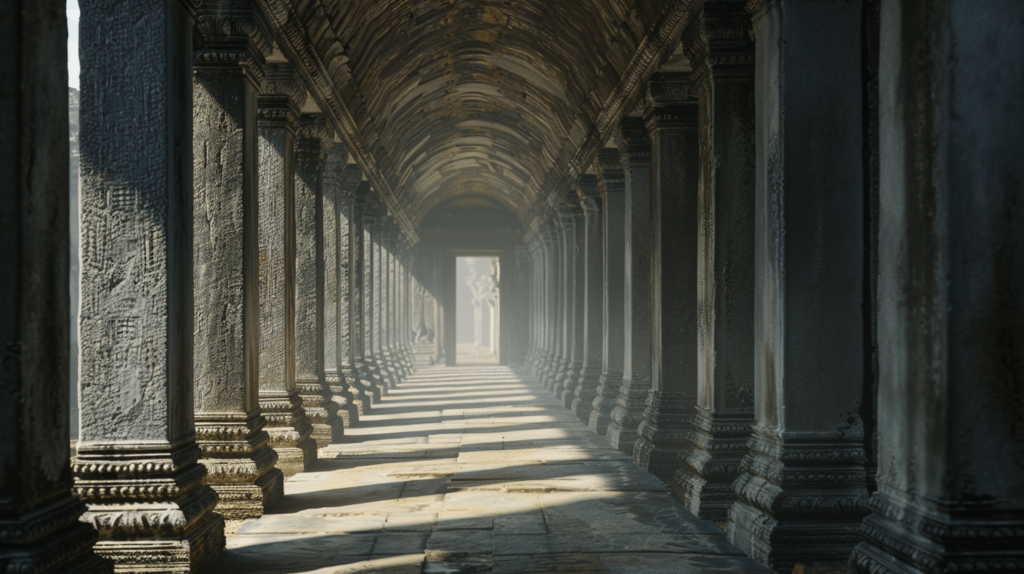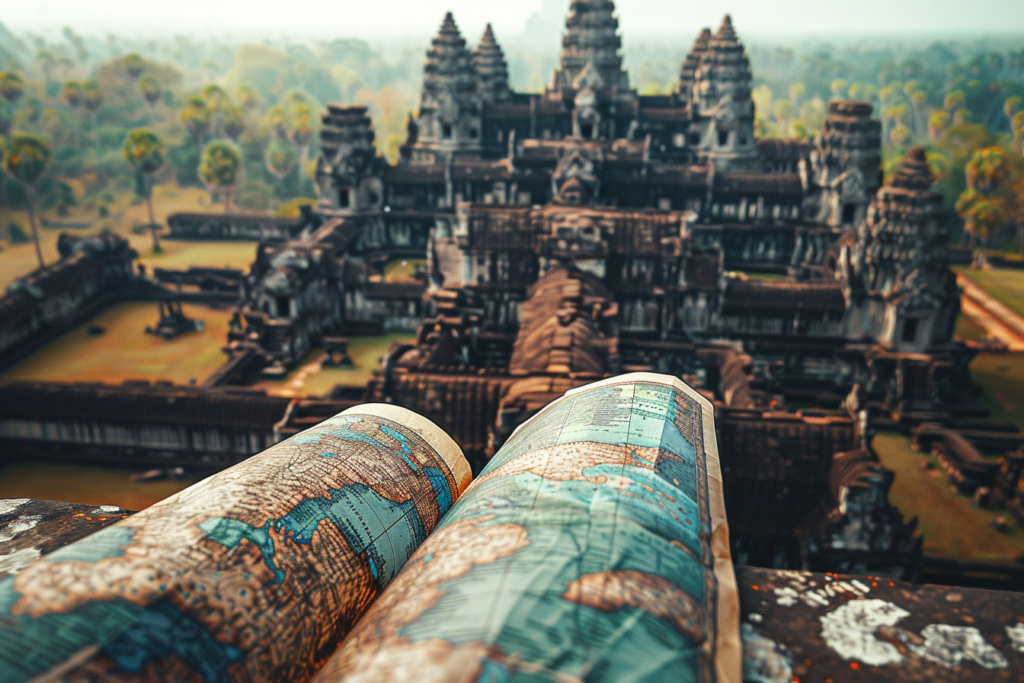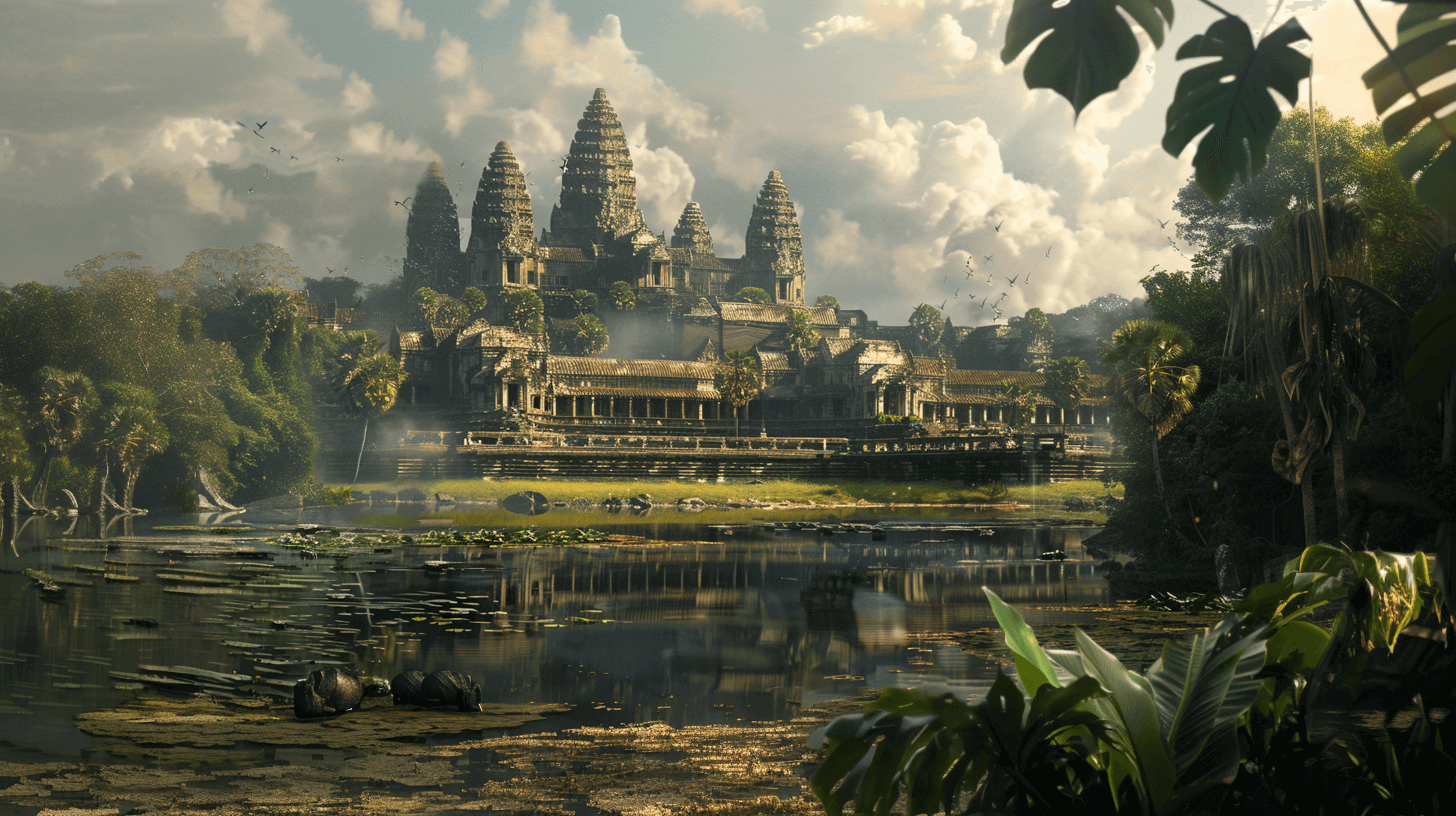Angkor Wat, located near Siem Reap in Cambodia, isn’t just any temple; it’s a massive and beautiful symbol of the Khmer Empire’s glory. Built in the 12th century by King Suryavarman II, this temple complex spans over 400 acres, making it the largest religious monument in the world. It started as a Hindu temple dedicated to Vishnu but later became a significant Buddhist site. Let’s dive into its rich history, stunning architecture, and lasting legacy.
The Fascinating History of Angkor Wat
How It All Began
Angkor Wat was built in the early 12th century by King Suryavarman II. It served as a state temple and political center. The construction took about 30 years and involved thousands of workers, including architects, builders, and artists.
From Hindu Temple to Buddhist Shrine
Originally, Angkor Wat was dedicated to the Hindu god Vishnu. Its five central towers represent the peaks of Mount Meru, a sacred mountain in Hindu mythology. But after the Chams attacked Angkor in 1177, King Jayavarman VII turned it into a Buddhist temple. He added many Buddhist statues and carvings, blending both religions.

Angkor Wat’s Architectural Wonders
Divine Design
Angkor Wat’s design is inspired by Hindu and Buddhist beliefs, particularly the idea of Mount Meru. The complex is surrounded by a huge moat, symbolizing the ocean at the world’s edge. Inside, there are three galleries and a central sanctuary with five towers, mimicking the mountain’s peaks and the cosmic ocean.
Detailed Carvings
One of the most impressive features of Angkor Wat is its detailed carvings. Covering over 1,200 square meters, these bas-reliefs show scenes from Hindu epics like the Mahabharata and Ramayana. A famous carving is the Churning of the Ocean of Milk, symbolizing the creation of the universe and the victory of good over evil.
Angkor Wat Through the Centuries
Rediscovery and Restoration
Angkor Wat was abandoned in the early 15th century but was “rediscovered” by French explorer Henri Mouhot in the 1840s. This sparked interest and restoration efforts, especially in the 20th century. Despite Cambodia’s political turmoil, including the Khmer Rouge era, major restoration work resumed in the mid-1980s. In 1992, Angkor Wat became a UNESCO World Heritage site.
Today, Angkor Wat is a living cultural site, attracting millions of visitors every year. It’s a source of national pride for Cambodians and is even featured on the Cambodian flag.
Visiting Angkor Wat: What You Need to Know
How to Get There
Angkor Wat is about five miles north of Siem Reap, a city with over 200,000 people. Siem Reap is the main gateway to the Angkor temples, with many hotels, restaurants, and tour services.

Exploring the Temple
Visitors enter Angkor Wat via a 617-foot bridge over the moat. Inside, three galleries lead to the central sanctuary, each offering amazing views and intricate carvings. The best time to visit is early morning, to see the stunning sunrise over the temple.
Angkor Wat in Popular Culture
A Symbol of Cambodia
Angkor Wat is more than a historical site; it’s a symbol of Cambodia’s rich cultural heritage and resilience. It’s featured in films, documentaries, and travel shows, making it a global icon.
Wrapping Up: The Enduring Legacy of Angkor Wat
Angkor Wat is a testament to the ingenuity and spiritual devotion of the Khmer Empire. Its mix of Hindu and Buddhist elements, intricate design, and historical significance make it one of the world’s most remarkable sites. Whether you’re a history buff, architecture lover, or spiritual seeker, Angkor Wat offers a unique and enriching experience.
Frequently asked questions
1. Is Angkor Wat still a Hindu temple?
Angkor Wat was originally built as a Hindu temple dedicated to the god Vishnu in the early 12th century. Over time, it transitioned into a Buddhist temple and continues to serve primarily as a Buddhist temple today. However, it still retains significant Hindu elements and is revered by both Hindus and Buddhists.
2. What is special about Angkor Wat temple?
Angkor Wat is special for several reasons:
- Architectural Marvel: It is the largest religious monument in the world, known for its grand scale, intricate carvings, and stunning architecture.
- Symbolism: The temple is designed to represent Mount Meru, the home of the gods in Hindu mythology, with its central tower symbolizing the mountain’s peak.
- Historical Significance: Angkor Wat is a UNESCO World Heritage Site and a symbol of Cambodia’s rich cultural and historical heritage.
- Artistry: The temple features elaborate bas-reliefs and sculptures depicting various scenes from Hindu epics like the Ramayana and Mahabharata, as well as Buddhist themes.
3. Which God is in Angkor temple?
Angkor Wat was initially dedicated to the Hindu god Vishnu. Later, as it transitioned into a Buddhist temple, it incorporated Buddhist deities and imagery, but Vishnu remains a central figure in its iconography.
4. Did a Tamil king build the Angkor Wat temple?
No, Angkor Wat was not built by a Tamil king. It was constructed by King Suryavarman II, a Khmer king of the Khmer Empire, in the early 12th century. The temple’s construction reflects the classical style of Khmer architecture, rather than the Dravidian style associated with Tamil architecture.




